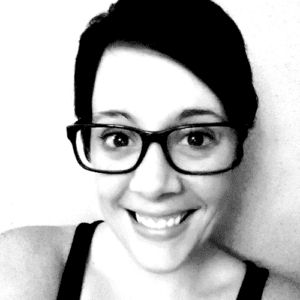Recently, I’ve been hearing the term “authentic art” used in the art ed world more and more. People talk of “authentic art experiences” and about how specific pedagogies are designed for authenticity. The concept of authentic art signifies an important idea in art education that has broad implications for how we teach and what we want students to learn. So, what does it mean and how can it shape our teaching?
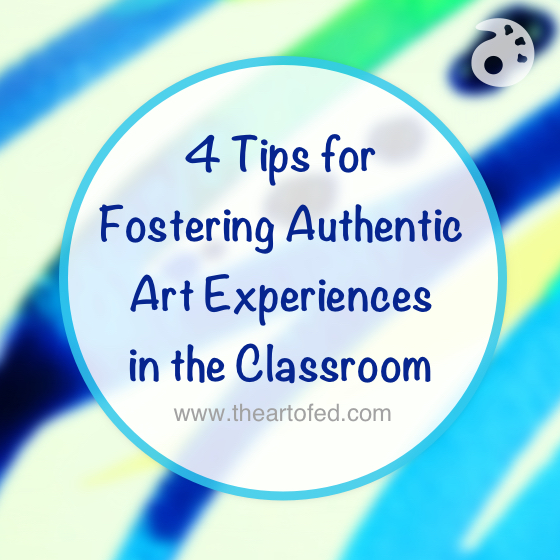
Authentic art is work created and planned by the student to express ideas that are personal and meaningful. It’s what all the historically important artists we admire did and what visionary contemporary artists continue to do today. It’s also a teachable behavior and an appropriate and necessary part of visual arts curriculum for all age levels.
In The Oxford Handbook of Aesthetics, Dennis Dutton writes, “Whenever the term “authentic” is used in aesthetics, a good first question to ask is, Authentic as opposed to what?” One might think that everything students do in art class is authentic art. It is called art class, after all.
In fact, a good portion of the work done by art students falls into a different category – exercises.
Understanding the differences between authentic art and exercises and how they each can be used to support contrasting types of classroom learning is critical for teachers.
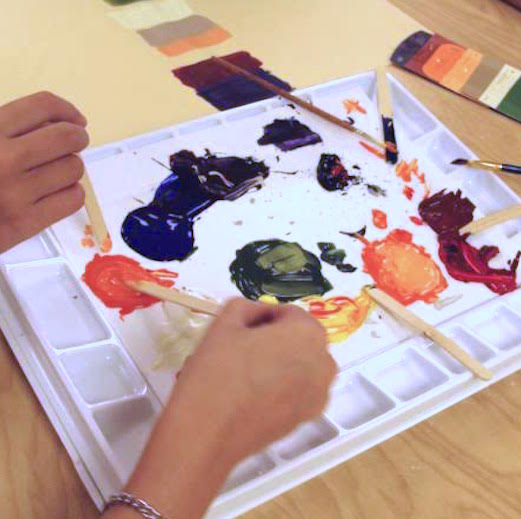
So, what’s the difference?
Authentic art is about meaning and creative thinking; exercises are about replication or building skills. One isn’t better than the other, they are just different aspects of learning and understanding visual arts content. Exercises are important for developing aptitude with media and technique while authentic art experiences are essential for teaching creative thinking. Creating authentic art also provides opportunities to apply skills learned in exercises. We can draw a comparison to the act of learning vocabulary versus writing an essay. Students need both types of activities to fully learn about making art.
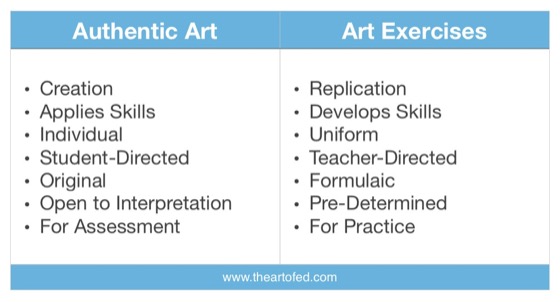
A good example of an exercise is an assignment that asks students to create a color wheel. The goal is to learn color mixing and color theory. Students are asked to replicate specific colors to build skill with paint. Most of the content is teacher-directed and the results are expected to be uniform. Students are asked to replicate a pre-determined outcome–specific colors.
On the other hand, an authentic art project that builds color theory knowledge could be the task of creating a painting based on a theme. Students are asked to think creatively to interpret the theme and produce a work that has personal meaning by applying knowledge of painting, including color theory. In this assignment, the student is asked to mix all colors from the primaries, but the results are expected to be varied based on the specific needs of each artist. To accomplish this task, information about color theory must be recalled and then applied to mix the colors needed for the artwork. The knowledge from the exercise supports the success of the authentic art experience. In the same way, just as making authentic art gives the student an opportunity to apply new skills and the teacher the opportunity to assess learning.
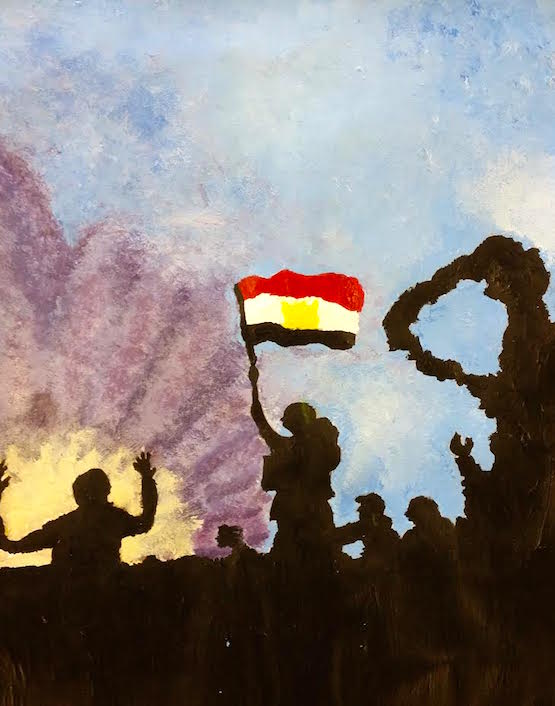
The colors of the painting above were mixed from primaries and the theme of the assignment was “Identity.” About her work she writes, “This artwork represents my ethnicity as an Egyptian and reveals the emotion of the people and of me (the artist) towards the revolution.”
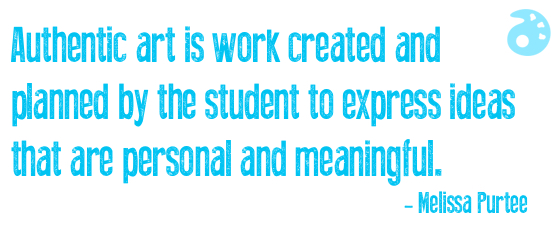
4 Tips for Fostering Authentic Art Experiences in the Classroom
Including a combination of exercises and authentic art experiences is important to teach both creative thinking and to build skills.
1. Teach skills separately.
So often we try to make projects out of skill exercises in an effort to fit everything in. This makes for projects that lean heavily on teacher direction, are low on creative application, and create un-clear learning goals for students. Is a monochromatic painting essentially different from a value scale? Why spend weeks on information that can be taught quickly?
2. Let students apply skills with open-ended tasks.
First teach the exercise, then let them apply it to artwork that is personally meaningful.
3. Consider theme-based authentic art experiences.
Giving students themes to work with is a great way to give parameters to an open-ended task and the perfect place for students to apply what they’ve learned in exercises.
4. Use master examples.
Talk with your kids about how great artists (past and present) used skills they developed to create authentic art. Try to use a limited selection of examples to encourage creative thinking instead of replication.
The Takeaway
Both authentic art and exercises are important parts of a well-rounded curriculum. Students at all levels must be challenged to make real, authentic art. We learn by doing. To learn about art, students must do the work of artists–plan, develop ideas, and apply concepts to communicate personally meaningful ideas, as well as to develop skills. When exercises become the main focus of instruction, students lose out on valuable learning.
Do you think authentic art is appropriate at every level?
How do you incorporate authentic art experiences in your lessons?
Magazine articles and podcasts are opinions of professional education contributors and do not necessarily represent the position of the Art of Education University (AOEU) or its academic offerings. Contributors use terms in the way they are most often talked about in the scope of their educational experiences.
